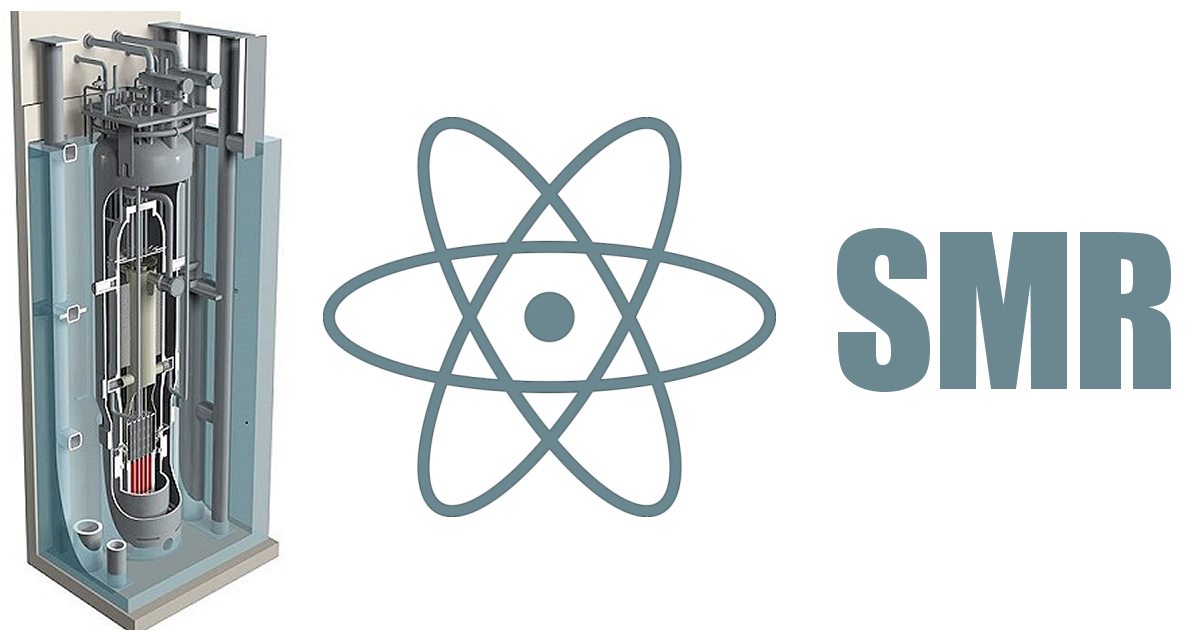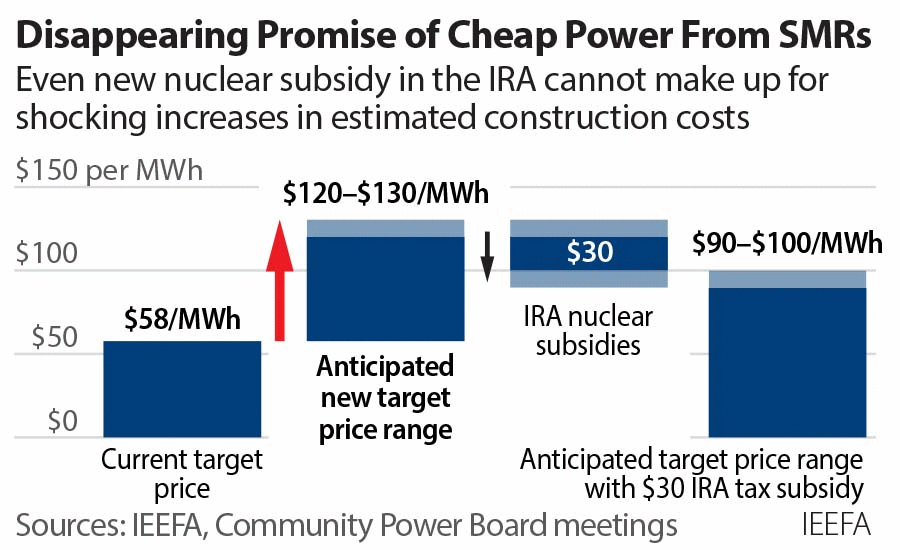
Even with generous subsidies from the feds, a proposed SMR (Small Modular Reactor) project in the USA appears to be following the trend set by bigger nuclear power stations planned or under construction – increasingly expensive electricity.
An SMR is a small nuclear power plant that can be pre-fabricated off-site and bolted together on-site. Well, there’s a little more to it than that. SMR tech is described by some as “plug and play”, but others might feel “plug and pray” could be more fitting.
As far as I’m aware, there are still no commercially operating terrestrial-based SMR power stations anywhere in the world. There’s certainly plenty of interest in the technology, both here and abroad. But given the ban on nuclear power in Australia, the first place we’ll see them – if they eventuate – is overseas.
Among the projects at various stages, Utah Associated Municipal Power Systems (UAMPS) wants to build a small modular nuclear reactor plant using technology provided by NuScale Power.
NuScale’s reactor was the first SMR to receive initial design approval from the U.S. Nuclear Regulatory Commission (NRC) for its 50 MW modules, which happened in 2020. The company is now seeking regulatory approval for an amended design with 77 MW capacity. UAMPS has already signed an agreement1 to deploy a VOYGR nuclear power plant at Idaho National Laboratory, which at this stage is hoped to be online by 2030.
SMR Cost Blowout
According to David Schlissel, Director of Resource Planning Analysis at the Institute for Energy Economics & Financial Analysis (IEEFA), the original target power price was USD $55 per megawatt-hour (MWh). That crept up to $58 per MWh last year.
But Mr. Schlissel says power prices from the project are now likely to end up in the range of $90-$100 per MWh – and that’s after a $1.4 billion subsidy from the U.S. Department of Energy (DoE) and a new subsidy from the Inflation Reduction Act (IRA) of $30 per MWh.
And there might be more hikes to come.
“Nuclear industry experience over the past four decades points to the likelihood of future cost increases and schedule delays during all phases of the project—design, construction, licensing, and testing,” states Mr. Schlissel.
Mr. Schlissel cites the example of two new reactors at Georgia Power’s Vogtle project, the cost of which has increased by 140% since construction began in 2011. Both reactors are currently more than six years behind schedule.
Issues including cost and SMR-related nuclear waste are indicating Small Modular Reactors won’t be the energy generation panacea some hope/wish they might be.
Not so trivial trivia: Australia’s CSIRO says renewables including wind and solar energy continue to be the cheapest new-build electricity generation option in Australia (even when including storage/transmission infrastructure). And – nuclear power ban aside – the organisation doesn’t see any local SMR projects happening this decade given the technology’s commercial immaturity and high cost.
Related: Why Australian Power Stations Will Never Go Nuclear.
Footnotes
- With wiggle room to cancel if power costs turn out to be too high. ↩


 RSS - Posts
RSS - Posts



Michael Bloch,
“As far as I’m aware, there are still no commercially operating terrestrial-based SMR power stations anywhere in the world.”
Some small reactors physically exist, but they don’t conform to the ‘modular’ definition of serial factory production of reactor components.
Russia has a floating nuclear power plant, called the Akademik Lomonosov, with two modified KLT-40 naval propulsion reactors on board, rated at 150 MWₜₕ / 35 MWₑ (gross) capacity each. Construction started on 15 Apr 2007, with operations commencing on 22 May 2020, after lengthy delays (about four times as long as originally planned), as well as huge cost overruns, from an initial estimate of around 6 billion rubles (US$₂₀₀₇232 million), to at least 37 billion rubles as of 2015 (US$₂₀₁₅740 million).
https://pris.iaea.org/PRIS/CountryStatistics/ReactorDetails.aspx?current=895
https://pris.iaea.org/PRIS/CountryStatistics/ReactorDetails.aspx?current=896
https://www.worldnuclearreport.org/-World-Nuclear-Industry-Status-Report-2021-.html
According to the OECD’s Nuclear Energy Agency, electricity produced by the Russian floating plant costs an estimated US$200/MWh.
https://www.oecd-nea.org/jcms/pl_14924
China has the world’s first prototype of a demonstration twin unit (2x 250 MWₜₕ) high-temperature gas-cooled reactor (HTGR) connected to a single steam turbine to generate 211 MWₑ (gross), at Shidaowan (Shidao Bay) in Weihai city. Initially approved in November 2005 construction began on 9 Dec 2012, and first grid connection occurred on 14 Dec 2021.
https://pris.iaea.org/pris/CountryStatistics/ReactorDetails.aspx?current=957
Both the Russian & Chinese physical examples undermine claims that SMRs could be built in as little as 2-3 years, & provide cheap electricity.
IMO, nuclear power for Australia makes no sense, unless the objective is to acquire fissile materials for nuclear weapons.
An analysis by physicist and University of British Columbia Professor M.V. Ramana, published in a perspectives paper titled Small Modular and Advanced Nuclear Reactors: A Reality Check, in IEEE Xplore on 9 Mar 2021, examines some of the claims being made by nuclear technology proponents, with a particular focus on the economic challenges. It briefly discusses the technical challenges confronting advanced reactor designs and the many decades it might take for these to be commercialized, if ever. It concludes with:
https://ieeexplore.ieee.org/document/9374057